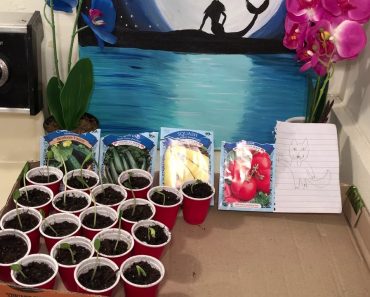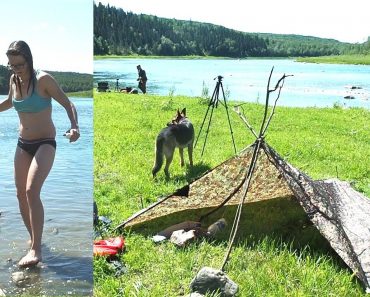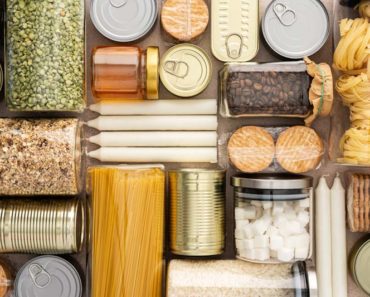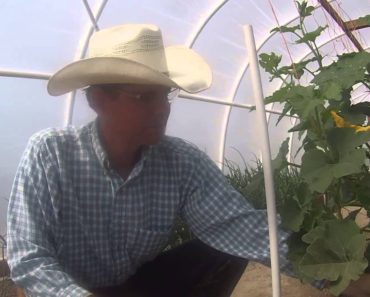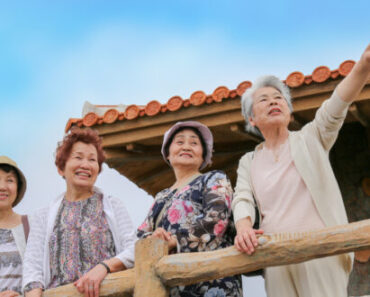The political left has been pushing the idea of global warming for decades now. They call it “climate change” now, because the data isn’t backing up the global warming narrative. But once they get past telling us that it’s not global warming anymore, they go back to talking about how the global temperature is rising and how that’s going to put an end to the world… or something like that.
The truth is, the world’s climate has changed throughout the centuries, with alternating warmer and cooler periods. Haven’t any of those people heard of the ice ages? Based on history, it’s not surprising that the average global temperature is changing; it would be much more surprising if it wasn’t.
According to various reports, there is some evidence that the world is getting warmer; or at least the northern hemisphere is. The problem for any of us, is that we can’t see that evidence ourselves, so we must rely on the reports of people who are quite possibly motivated by ideology, rather than by scientific fact. But according to those reports, the north polar ice cap is shrinking, so are various glaciers. But at the same time, the ice cap over Antarctica is growing. What’s really going on?
Part of the problem is that there have been claims for over 80 years now; none of which have come true. We’ve been hearing about how the rising seas will cause islands to disappear; but the disappearance date keeps changing. Islands which were supposed to already be gone, still exist, with the Department of the Interior now claiming that they’ll disappear in the next 20 years. Uh, didn’t they say that 20 years ago?
Their claim that the world’s temperature will rise by two degrees centigrade may actually be true, even though their claims that it is caused by humans and our technology is in doubt. So, let’s assume for a moment that their end-game of a two degree increase in the world’s temperature is true; what actual difference is that going to make and what can we do to ensure our survival in a somewhat hotter world? How do we, as preppers deal with this?
I live in a warmer part of the country, so dealing with heat is normal for me. When people talk about global warming, as if we won’t be able to grow food, it doesn’t compute. Maybe it won’t be as cold in Minnesota in another 20 or 30 years, but it won’t be hotter there, than it is in the south today.
Lettuce, a cold weather crop, is mostly grown in California and Arizona, states which aren’t exactly known for their cold weather. Maybe they won’t be able to grow lettuce as the climate warms, so that farming will have to move to North Dakota or Minnesota. So what?
In my thinking, if there is any truth to what they’re saying, then what we all need to do is prepare to live in a warmer climate. As preppers, that means seeing what we can do to reduce our energy costs for cooling and making sure that we can still grow food to eat. A bigger issue might be water, as there has been increasing drought across much of the country.
This Device Easily Turns Air Into Water!
Dealing with Potential Drought
Most preppers harvest at least some of their own water from nature. The most common method is through rainwater capture. But rainwater capture and drought don’t seem to line up well with each other.
The big key here is to have massive amounts of storage. That way, when it does rain, you’ll be able to store the most water possible. A few water barrels is enough to get through a few days or even a week; but if you go through two or three months without rain, it’s not going to be enough. Rather, you need to be filling a swimming pool with the water, when it rains, so that you have enough to last for a while. An above-ground swimming pool doesn’t cost that much and will hold quite a bit of water.
You’re actually better off with a well, if you can do it. Drilling a well is usually an expensive operation, requiring the services a well-drilling contractor. There aren’t many places which will rent out a well drill, mostly because of the risk in renting that equipment out.
If you are fortunate enough to live on the coast, your other option is seawater. While seawater can’t really be used as it is, it can be desalinated, making it possible to drink. Reverse Osmosis is the normal way of desalinating seawater, which is something that can be done in the home.
Another thing to consider is grey water recapturing. Few people bother with this, because of the great availability of tap water. But using the greywater from baths, showers and sinks allows you to get much more mileage out of the water you have. That water can be used for further cleaning, as well as for watering your garden.
Growing Out Own Food
Besides water needed for personal use, we need a fair amount of water for gardening. Fortunately, grey water can be used, and should be used if we’re living in any area affected by a water shortage. It can take a lot of water to grow a garden, especially if we’re trying to do it in the heat. That means we can expect to need more water for our gardening as the world gets warmer.
The idea that food will not be able to grow, if the global temperature goes up by 2°C is false. We may not be able to grow all the same things, in all the same places; but we’ll be able to grow food. The USDS has divided the country into 10 growing zones, by climate, with a heavy emphasis on the temperature during the growing season. If you look at that map, the difference between one growing zone and the next is only 10°C. What that means is that even if the global warming claims are true, all any of us will have to do, to keep growing our own food, is to select seeds which are rated for one growing zone warmer than what we’re accustomed to.
I live in growing zone 9 and used to live in growing zone 10. What I did there, was to stretch shade cloth over my garden, which blocks out about half the sunlight. That kept things a bit cooler, making it easier for my plants to survive the heat of summer. Had I not moved, I was considering putting in misters to cool things even further.
Keeping Our Homes Cooler
The other challenge that global warming would provide is not so much a survival problem, but a comfort problem. Unless we can’t produce enough power to run air conditioners, we should still be just fine. But considering that both Texas and California are using rolling blackouts in the summertime, to make up for a lack of available electricity, perhaps we should be ready with alternate ways of keeping cool.
Before air conditioning, people mostly had to just suffer with the heat. Nevertheless, there were things they could do, which would keep their homes cooler. The first of these was to make good use of shade. Building a home in the shade of trees or planting trees so that they will overshadow the home is a great way to save on heating.
Trees take a long time to grow, making that a long-term solution. In the meantime, vines, planted on the south side of the house can provide shade, helping to keep the home cooler and reducing energy bills. The vines need to be on trellises that hold them off the wall (say a foot from the wall), so that air can pass behind the trellis. It will still take time for the vines to grow, but much less than the trees.
Proper insulation and sealing make a big difference in keeping your home cool, just as they do for keeping your home warm in the wintertime. While you might have to open windows and doors, to get some airflow if the air conditioner is down, you want the home well sealed while the air conditioning is in use.
Light colors absorb less sunlight than dark ones, reflecting it instead. So, if you have to paint your home or put on a new roof, consider going with lighter colors. That’s a lot of expense, if it is not necessary; but if you need to do it anyway, it makes more sense to use colors which will help keep your home from overheating.
Finally, airflow helps with cooling. If you can get a breeze blowing through your home, it will help keep things cooler. That may be tricky, if the prevailing wind comes from a direction where you don’t have any doors or windows. In that case, it would be helpful to build a wall or fence section, sticking out from the house, which could channel the wind into a doorway or window. Open a door or window on the opposite side, to allow the wind to pass all the way through your home.
One Final Thought
The old tradition of the siesta, as practiced in Mexico, was there more to help them deal with the heat, than anything else. People would take siesta after lunch, in the hottest part of the day, then work into the evening. There’s a lot to be said for that. I don’t know if any other countries have or have had a similar tradition, but it makes a lot of sense.
If global warming is real and we end up dealing with a hotter climate, perhaps what we need to consider doing is changing our schedule, Rather than trying to get the most possible sunlight from daylight savings time, perhaps what we’ll need to do is try to get more dark, so that we can work in that dark, without having to put up with as much heat. If we use LED lighting, we won’t have much of a problem with heat from our lights.
Under this system, we could work during the coolest time of the night, quitting at dawn. That would give us the early morning hours, which are normally cool, for the activities which we currently do at night. Then, we could go to bed before it gets really hot and sleep through the hottest part of the day.
All that surviving global warming will require, if it comes, is adapting ourselves to the new situation. If there’s anything that mankind has shown itself adept at throughout history, it’s adapting. This will just be one more chance for us to use our brains and adapt, rather than succumb to the fear mongering all around us.



